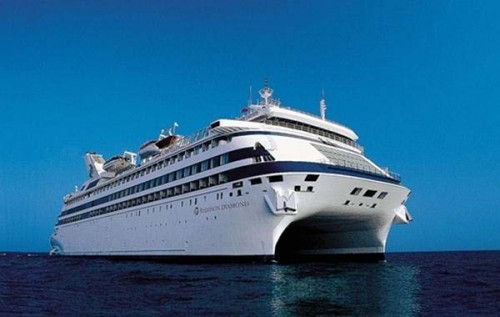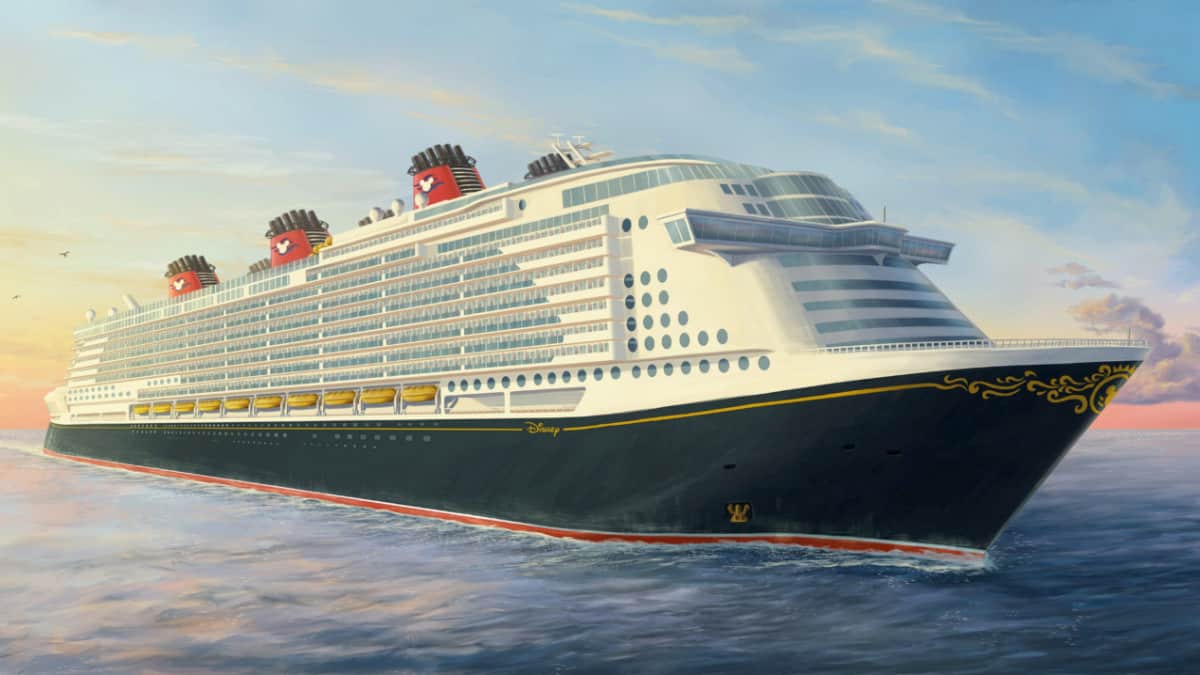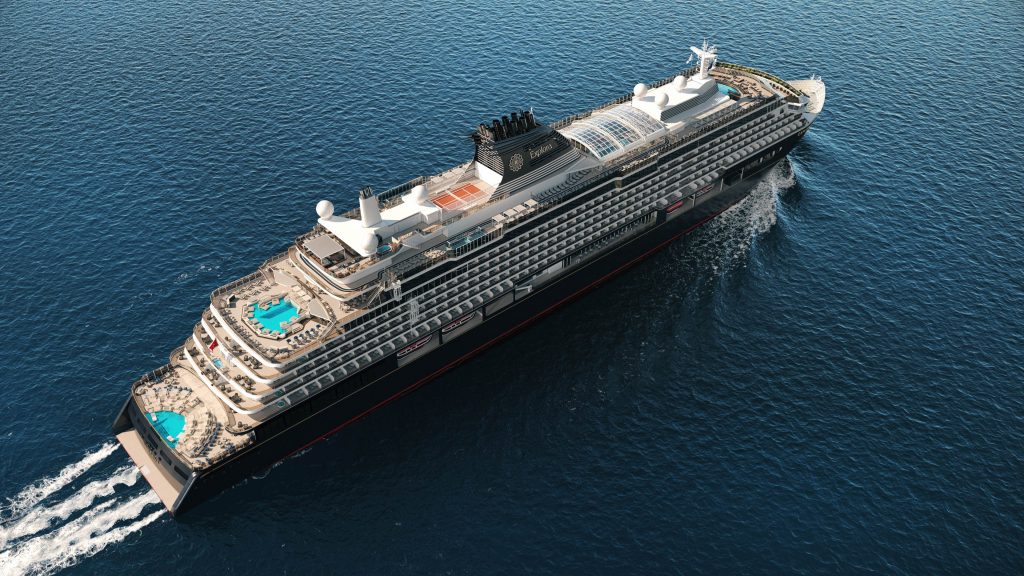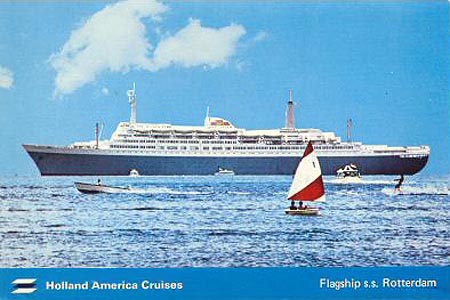For interior photographs of Radisson Diamond: https://www.cruiseshipodyssey.com/cruiseships/radisson-diamond/
This Finnish-flagged intimate-sized cruiseship is of the so-called SWATH-design, short for Small Waterplane Area Twin Hull.
At the time, Finnish shipbuilder Wartsila offered various types of this catamaran-type design, ranging from ferries to large cruiseship versions capable of carrying over 2000 passengers. But the 20.300GRT Radisson Diamond was the only one of all of this specific types of ship ever to be actually built. She was delivered to Diamond Cruise Company, Helsinki in 1992 and was managed by the Radisson Hotel chain.
Her building cost was $250 mio. Her crew numbered 186 and her passenger capacity was 350 guests in 172 staterooms. Two of these were 550-square-foot suites with private verandas selling for $900 a day per person.
Of the remaining standard staterooms, 120 had private verandas and 55 had enclosed verandas with a picture window offering larger inside sitting areas intead. These were priced at $600 a day per person (double occupancy) in the Caribbean, and $700 in the Mediterranean during the summer season. This expensive high-end vessel offered complimentary soft drinks and house wines at dinner and its cabin mini-bars were stocked with four free bottles at the start of each cruise. Her cabins were arranged on both sides of the ship, many of them had small balconies. They were placed above the ships twin hulls while her public spaces were located in between in the centre of the vessel.
When Radisson Diamond was shown to the travel industry during a three day shakedown cruise out of Tilbury, unfortunately the English Channel was unusually smooth, so it wasn’t possible to demonstrate her unusal stability, due to her twin hull and deep draft of 26 feet, and two pairs of stabilizers to minimize pitch, heave and roll, thus reducing the chance of seasickness. On top of this, she is was 105 ft wide, while a comparably sized cruise ship is appr. 75 feet wide.
Partly because of her width, her public rooms and hallways were more spacious than usual, adding to her luxury hotel-like onboard atmosphere and resulting in a passenger-space ratio (gross registered tonnage divided by the number of passengers) of 56 which is exceptional compared to that of competing ultra-luxury vessels like e.g. Crystal Cruises’ Crystal Harmony’s 51.4 and the Royal Viking Sun’s (Royal Viking Line) 51.3.
At the time she was quite technologically advanced in different ways, being one of the first cruise ships with a computerized passenger photo security system and her eight satellite phone connections, the most of any ship back then.
During her design stage, her owners Diamond Cruises Ltd. planned to use her mainly for group travel, but these plans proved to be not viable, but six smaller meeting rooms and three board rooms which could be combined to a conference center seating 150 were kept in the design. These spaces doubled as library and card rooms.
Radisson Diamond had just two lounges, The Club, a room with an Art Deco touch and luxury leather sofas and her main lounge Windows, the focal point of the ship, a three-level lounge with two bars, where for example afternoon tea was served but which at night changed into a lively disco.
Being a rather small vessel, apart from her central atrium (which looked much larger than it was in reality because of the lavish use of mirrors and its glass elevators) and her casino (three blackjack tables and 46 slot machines), the only remaining public rooms were her main open-sitting dining room with its glass wall giving passengers stunning views of the ocean aft of the ship, silver draperies and high ceiling and the complimentary specialty retaurant The Grill. Here, chefs Felice and Hanne Marra served a different Italian menu nightly. This cosy restaurant seated 50, so because of its popularity, reservations were needed.
Radisson Diamond‘s itineraries usually did not cover large distances or a large number of ports. Because of her SWATH- dual hulled construction and her deep draft, she was an unusually slow ship. And on top of this, Diamond Cruises wanted its passengers to be able to spend more time in port with occaisional overnight stays, being able to participate in longer excursions and spend more time ashore. Also, Radisson Diamond sometimes made unscheduled stops folding out her hydraulically operated floating marina at her stern enabling guests to use her enclosed swimming pool, jet skis, or even go sailing or water-skiing.
According to Diamond Cruises, the company targeted the well-travelled, affluent, well-off guests normally sailing on Royal Viking, Sea Goddes or Seabourn ships.

In a surprise move, her Finnish owner sold her in 2004 to Stanley Ho, a well known casino owner who had her rebuilt for short gambling cruises. Only the dining room stayed intact, all other public spaces were adapted to gambling activities. She was renamed Omar Star and shortly thereafter Asia Star.


In 2012 she was acquired by Chinese interests, China Cruise Company for $45 mio. Business man Huan Weijian invested overall $80 mio in the new company, upgrading her for ca. $ 20 mio.
She has been renamed again to China Star and operates from Hong Kong on short gambling cruises, marking the end of the first SWATH cruise ship in regular cruise service.





